Illapa: Powerful Master Of Clouds, Rain And Hail – Worshipped By Inca People
A. Sutherland - AncientPages.com - Illapa (aka Apu Illapu, Ilyap'a, Katoylla) is considered by many as one of the most important deities in the Inca pantheon.
Staty av Pachacutiq i Machupicchu Pueblo i Peru. Image credit: Elemaki - CC BY 2.5
He had a number of overlapping identities located in several different places. One of his powerful identities we have described earlier here.
This very popular weather god associated with rain was frequently imagined as a man in the sky, dressed in shining garments and carrying a sling and a war club.
The lightning was believed to be the flashing of his clothing, and the thunder was the crack of Illapa’s sling. Illapa, venerated in areas of the central highlands of Peru and northern Chile, had the power to make rain, hail, and thunder; he also mastered clouds. His activities were crucial because the sky was the source of both sun and rain for sustaining crops, according to the Inca beliefs.
They prayed to Illapa for rain and protection from drought. His figure was worshiped at Coricancha (Qorikancha), where Illapa had his own temple in the religious complex in the Inca capital at Cuzco, which contained the Temple of the Sun, the most sacred place in the Inca religion and the very center of the Inca world.
Illapa’s wasi (temple) contained his cult statue and religious objects associated with him. He was depicted with his face covered by a headdress to symbolize the veiling of the thunder by the clouds.
During the late sixteenth century the Spanish compared his figure to that of the apostle James, whose horse galloped across the heavens producing the sound of thunder.
Sacsayhuamán, Cusco, Peru. Image credit: Diego Delso - CC BY-SA 4.0
According to a myth, Illapa filled a jug of water from the Milky Way and gave it to his sister to care for. It rained only when Illapa broke his sister's water jug, causing the rain to fall.
The Quechua people in the Peruvian Andes associated Illapa with Saint James, the patron of Spain. They celebrated both god Illapa and Saint James on July 25. The flashing swords and the explosions from the Spanish soldiers’ muskets reminded the Inca of lightning followed by a clap of thunder.
Sacsayhuaman, a true wonder of prehistoric South America, is constructed of flawlessly fitting cyclopean boulders, which zigzag across the plateau for approximately 400 meters.
It is believed that Sacsayhuaman was created during the time of Pachacutec or Pachacuti Inca Yupanqui (in Quechua: Pachakutiq means "he who overturns space and time" and Yupanki means "with honor") , who made it to the ceremonial center in honor of the great god Illiapa (god of thunder), which helped him in his struggles.
Therefore, it is said that some walls of Sacsayhuaman are shaped like thunder (zigzag).
Written by – A. Sutherland AncientPages.com Staff Writer
Copyright © AncientPages.com All rights reserved. This material may not be published, broadcast, rewritten or redistributed in whole or part without the express written permission of AncientPages.com
Expand for referencesReferences:
John E. Staller,Brian Stross, Lightning in the Andes and Mesoamerica
de Gamboa, Pedro Sarmiento. History of the Incas
More From Ancient Pages
-
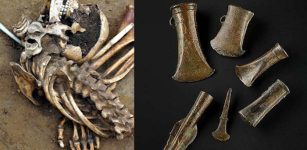 DNA Study Sheds New Light On Ancient Britain’s Language, Ancestry, Kinship, Milk
Archaeology | Dec 26, 2021
DNA Study Sheds New Light On Ancient Britain’s Language, Ancestry, Kinship, Milk
Archaeology | Dec 26, 2021 -
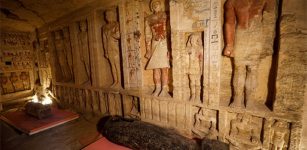 Collection Of 59 Well-Preserved 26th Dynasty Coffins Unearthed In Saqqara Necropolis, Egypt
Archaeology | Oct 4, 2020
Collection Of 59 Well-Preserved 26th Dynasty Coffins Unearthed In Saqqara Necropolis, Egypt
Archaeology | Oct 4, 2020 -
 5 Surprising Things DNA Has Revealed About Our Ancestors
DNA | Sep 27, 2023
5 Surprising Things DNA Has Revealed About Our Ancestors
DNA | Sep 27, 2023 -
 Rare Animal-Shaped Mounds Discovered In Peru
Archaeology | Apr 2, 2012
Rare Animal-Shaped Mounds Discovered In Peru
Archaeology | Apr 2, 2012 -
 Colonnaded Hall Decorated With Captivating Frescoes Unearthed At Pompeii
Archaeology | Dec 30, 2024
Colonnaded Hall Decorated With Captivating Frescoes Unearthed At Pompeii
Archaeology | Dec 30, 2024 -
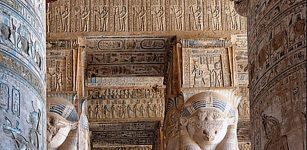 Egypt’s Dendera Temple: Second Restoration Phase Is Now Completed
Archaeology | Mar 6, 2021
Egypt’s Dendera Temple: Second Restoration Phase Is Now Completed
Archaeology | Mar 6, 2021 -
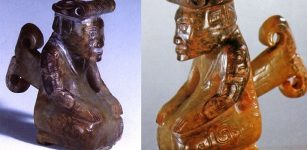 Peculiar Artifact Discovered In Tomb Of The Warrior Queen Fu Hao
Artifacts | Oct 26, 2018
Peculiar Artifact Discovered In Tomb Of The Warrior Queen Fu Hao
Artifacts | Oct 26, 2018 -
 Missing Piece Of A Linguistic Puzzle: Ancient DNA Identifies The Originators Of Indo-European Languages Spoken By 40% Of The World
DNA | Feb 12, 2025
Missing Piece Of A Linguistic Puzzle: Ancient DNA Identifies The Originators Of Indo-European Languages Spoken By 40% Of The World
DNA | Feb 12, 2025 -
 Lost Since 1362: Researchers Discover The Church Of Rungholt – A Sunken Medieval Trading Place
Archaeology | May 25, 2023
Lost Since 1362: Researchers Discover The Church Of Rungholt – A Sunken Medieval Trading Place
Archaeology | May 25, 2023 -
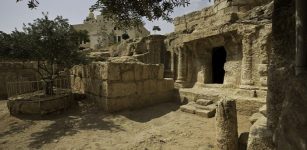 Fascinating Legend Of The Seven Sleepers Of Ephesus
Featured Stories | Oct 31, 2016
Fascinating Legend Of The Seven Sleepers Of Ephesus
Featured Stories | Oct 31, 2016 -
 28,000-Year-Old Lapedo Child: Human-Neanderthal Hybrid Reveals A Prehistoric Secret
Evolution | Mar 10, 2025
28,000-Year-Old Lapedo Child: Human-Neanderthal Hybrid Reveals A Prehistoric Secret
Evolution | Mar 10, 2025 -
 God’s Personal Flying Vehicle Described In ‘The Book of Ezekiel’
Biblical Mysteries | Jul 18, 2019
God’s Personal Flying Vehicle Described In ‘The Book of Ezekiel’
Biblical Mysteries | Jul 18, 2019 -
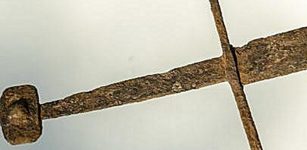 Medieval Well-Preserved Sword Discovered In A Peat Bog In Poland
Archaeology | Jun 21, 2017
Medieval Well-Preserved Sword Discovered In A Peat Bog In Poland
Archaeology | Jun 21, 2017 -
 Discovery Of Oldest Human Footprint In The Americas Can Re-Write History
Archaeology | Apr 30, 2019
Discovery Of Oldest Human Footprint In The Americas Can Re-Write History
Archaeology | Apr 30, 2019 -
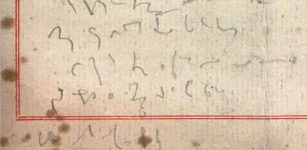 Who Can Solve The Shackleton Scribble Mystery?
Artifacts | Sep 13, 2017
Who Can Solve The Shackleton Scribble Mystery?
Artifacts | Sep 13, 2017 -
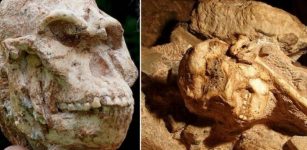 Skull Reveals Little Foot Was Capable Of Different Head Movements Than Modern Humans
Human Beginnings | Mar 25, 2020
Skull Reveals Little Foot Was Capable Of Different Head Movements Than Modern Humans
Human Beginnings | Mar 25, 2020 -
 Underwater Stone Age Village Habonim North Found Off Israel’s Carmel Coast Thrived During Climate Change
Archaeology | Aug 1, 2024
Underwater Stone Age Village Habonim North Found Off Israel’s Carmel Coast Thrived During Climate Change
Archaeology | Aug 1, 2024 -
 Syamantaka – Divine Jewel With Magical Powers Was A Gift From The Sun God In Hindu Mythology
Featured Stories | Mar 1, 2019
Syamantaka – Divine Jewel With Magical Powers Was A Gift From The Sun God In Hindu Mythology
Featured Stories | Mar 1, 2019 -
 Pyramid Texts Of Ancient Egypt That Charted Journey Of Pharaohs Into Afterlife
Ancient Mysteries | Feb 26, 2020
Pyramid Texts Of Ancient Egypt That Charted Journey Of Pharaohs Into Afterlife
Ancient Mysteries | Feb 26, 2020 -
 Silver Jewelry Buried In Leather Purse Discovered In Bulgaria
Archaeology | Apr 5, 2016
Silver Jewelry Buried In Leather Purse Discovered In Bulgaria
Archaeology | Apr 5, 2016


